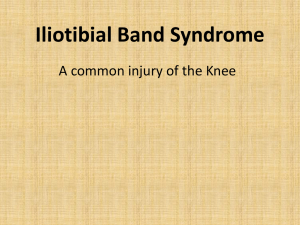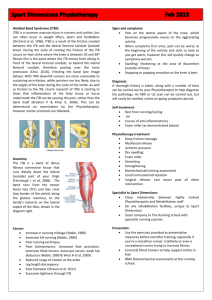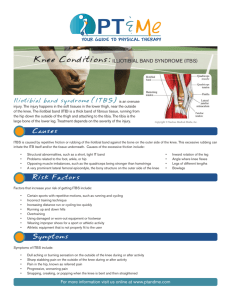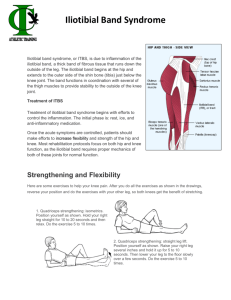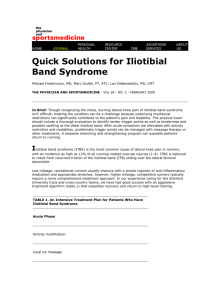4-Ilio-Tibial Band Syndrome
advertisement
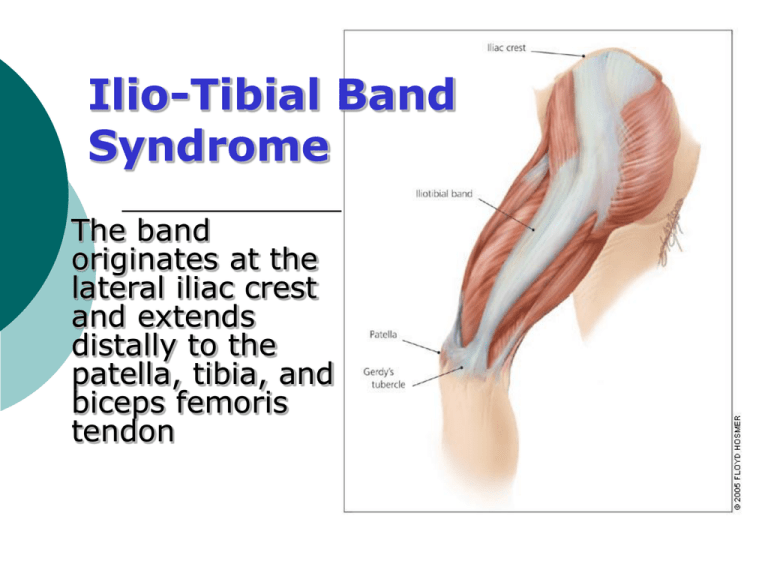
Ilio-Tibial Band Syndrome The band originates at the lateral iliac crest and extends distally to the patella, tibia, and biceps femoris tendon Features of ITB syndrome Lateral knee pain Frequently seen in runners or cyclists (overuse) due to slides over the lateral femoral epicondyle during repetitive flexion and extension of the knee MRI shows distal iliotibial band becomes thickened and that the potential space deep to the iliotibial band over the femoral epicondyle becomes inflamed and filled with fluid 2 Potential risk factors Preexisting iliotibial band tightness High weekly mileage Time spent walking or running on a track Interval training and muscular weakness of: knee extensors, knee flexors, and hip abductors 3 Differential Diagnosis of Lateral Knee Pain Biceps femoris tendinopathy Degenerative joint disease Lateral collateral ligament sprain Lateral meniscal tear Myofascial pain Patellofemoral stress syndrome Popliteal tendinopathy Referred pain from lumbar spine Stress fracture Superior tibiofibular joint sprain 4 Physical Assessment findings Pain localized 2 cms above joint line Worse when standing with knee flexed 30º Multiple trigger points in the vastus lateralis, gluteus medius, and biceps femoris Demonstrable weakness of the muscles 5 Ober's test Assess tightness of the iliotibial band: Client lies down with the unaffected side down and the unaffected hip and knee at a 90º angle If the iliotibial band is tight, the client will have difficulty adducting the leg beyond the midline and may experience pain at the lateral knee (arrows). 6 Treatment Activity modification, massage, and stretching and strengthening of the affected limb Anti-inflammatory medicines and stretching 7 Stretches of the right iliotibial band 8 Weight-bearing exercises for strengthening of the right gluteus medius muscle (A) The patient stands on a platform and lowers the left leg toward the ground slowly. (B) Through contraction of the right gluteus medius, the patient then elevates the leg, returning the pelvis to a level position. 9
